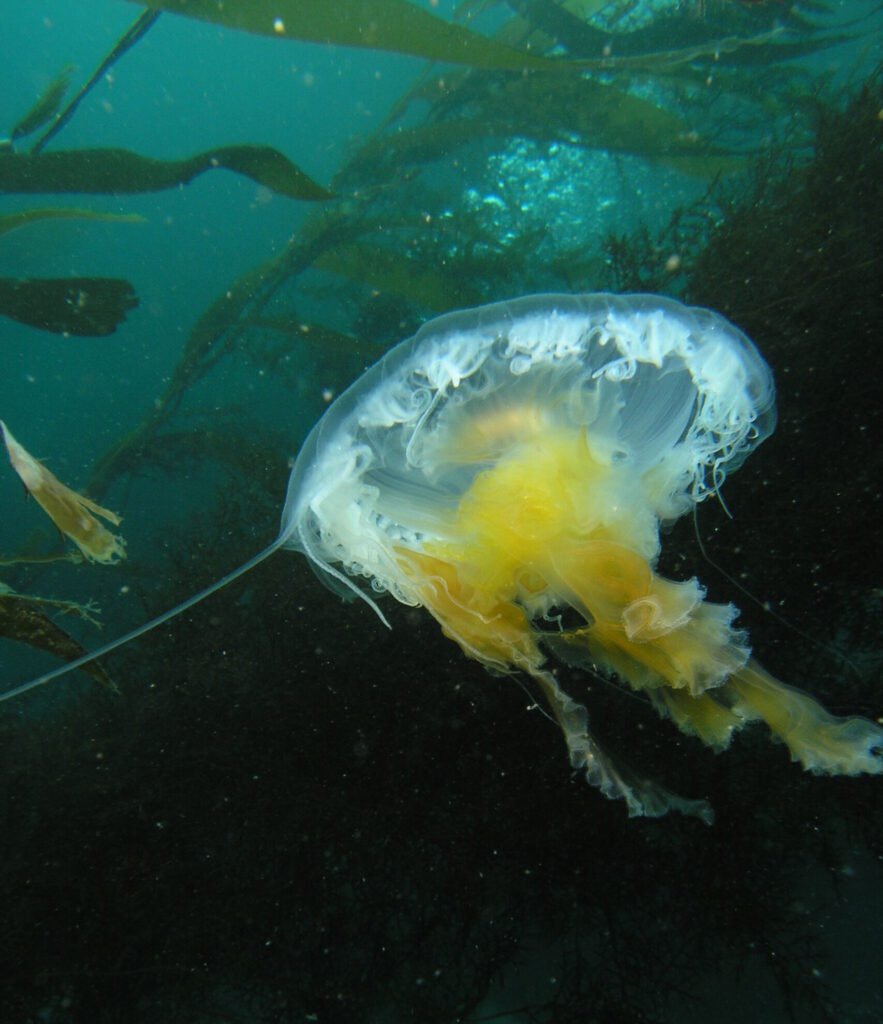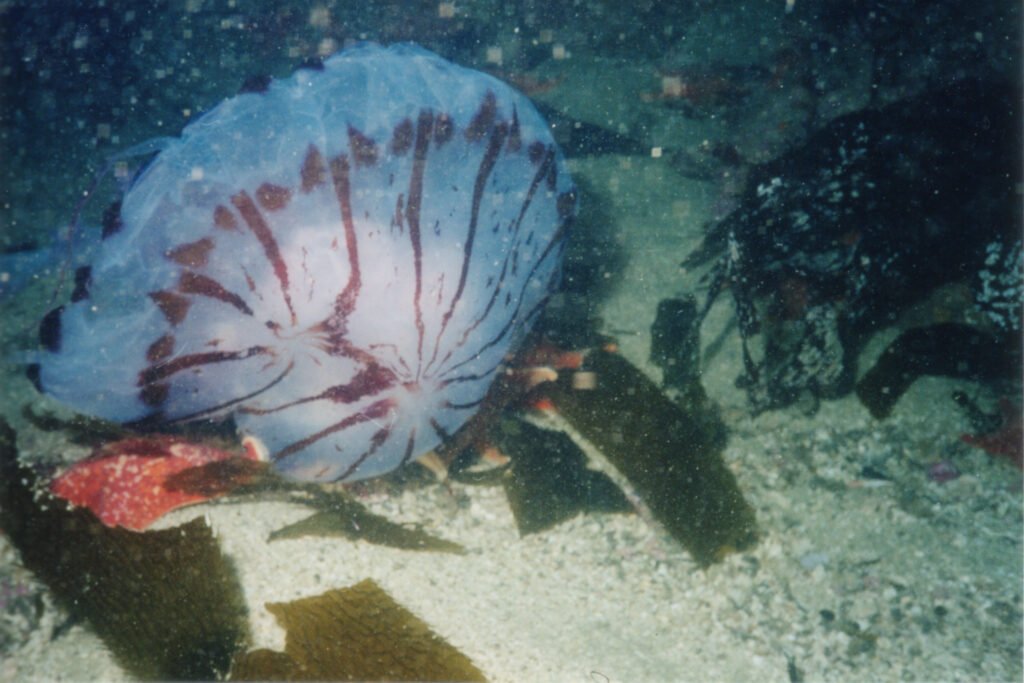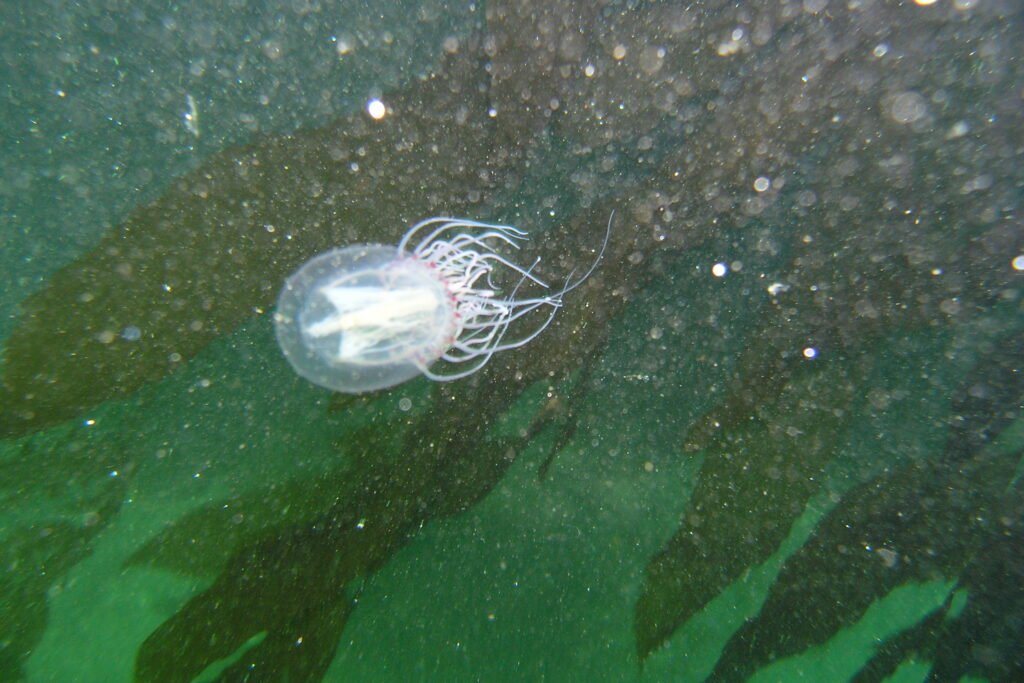Physical Description
The Sea Nettle, Chrysaora fuscesens, is a large medusa with a diameter of up to 30 cm. Its bell is yellow-brown to reddish-brown with 24 dark tentacles around the margin. It possesses long and folded oral arms that are dark with white/clear frills.
Habitat and Geographical Range
Sea Nettles can form large aggregations, especially from late summer through winter. They are typically pelagic and found offshore from kelp forests along the eastern Pacific coast.
What They Eat and How They Breed
Sea Nettles primarily feed on small fish, plankton, and other small invertebrates that they capture using their tentacles. They reproduce sexually, releasing eggs and sperm into the water column where fertilization occurs, leading to the development of free-swimming larvae.
Physical Threat to Humans
Sea Nettles possess stinging cells in their tentacles that can cause an unpleasant sting to humans upon contact. While not usually life-threatening, the sting can cause discomfort, pain, and sometimes allergic reactions in sensitive individuals.




